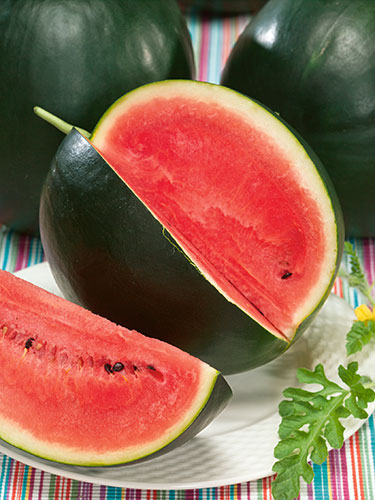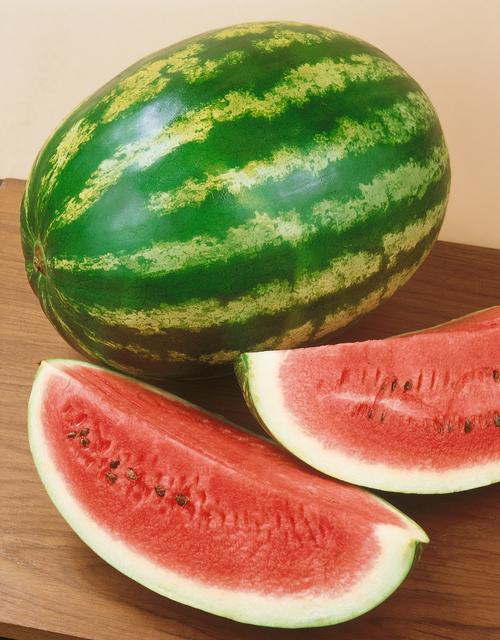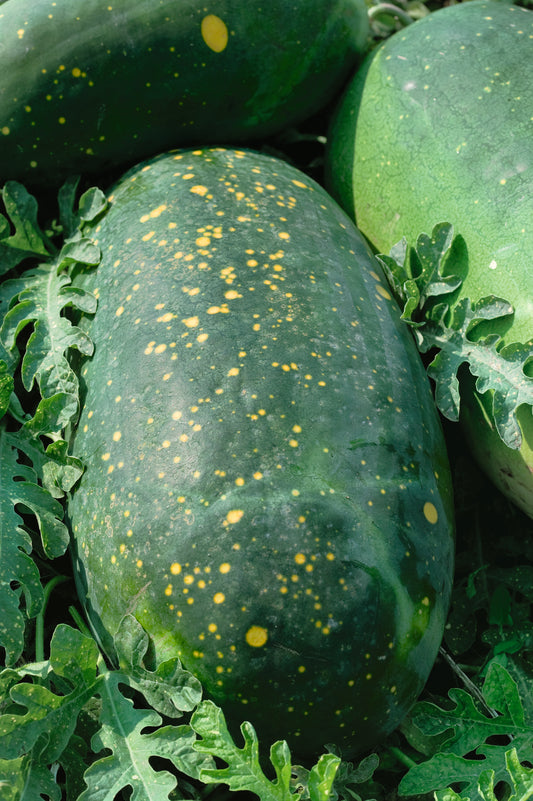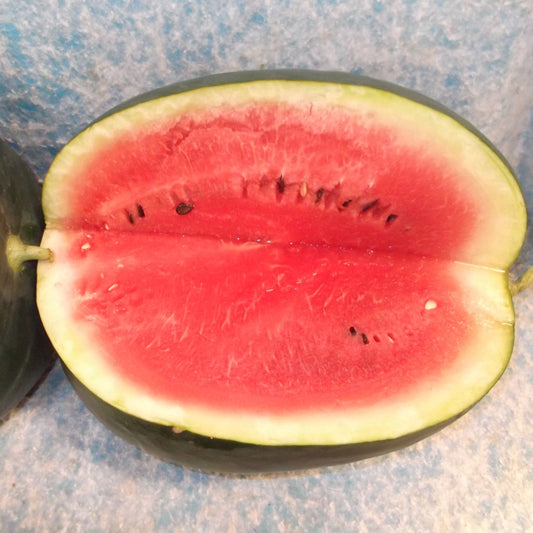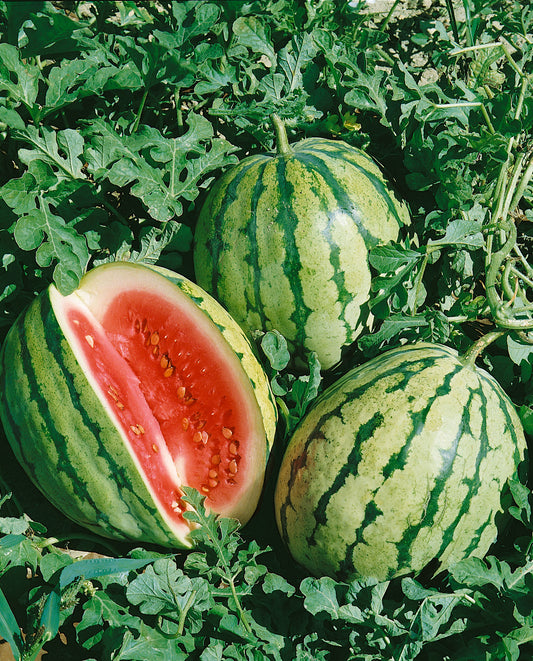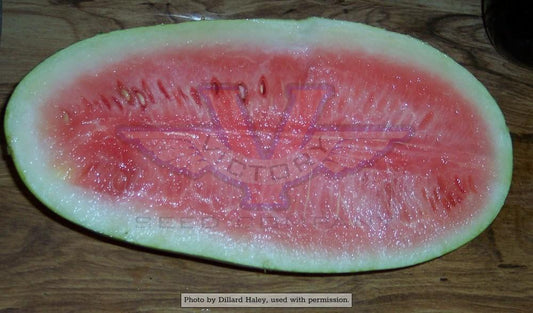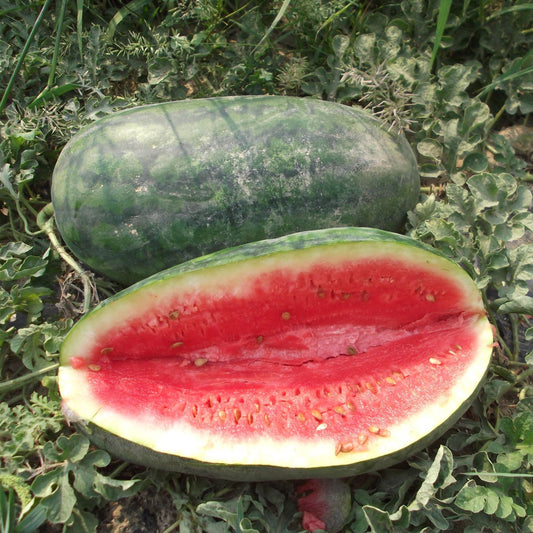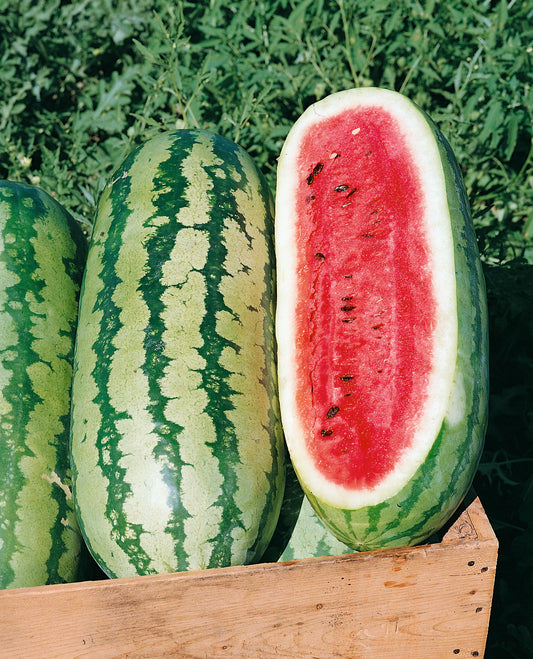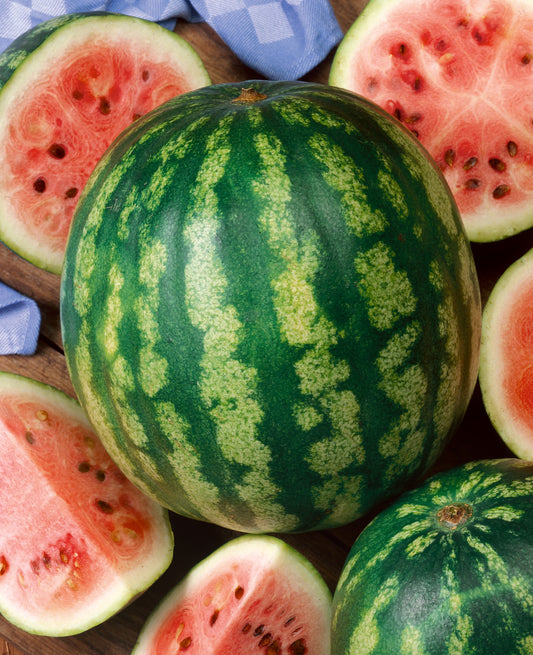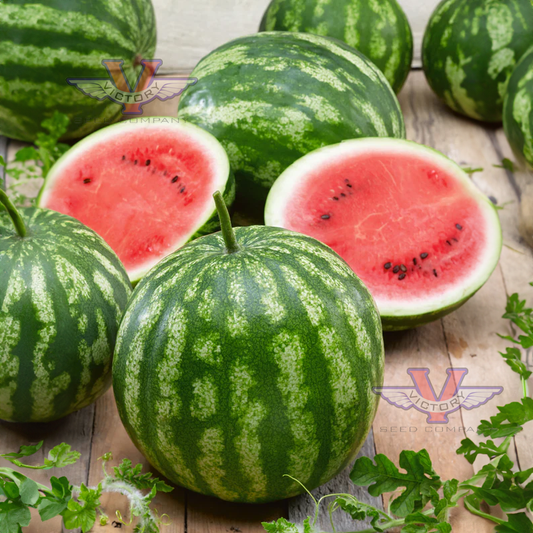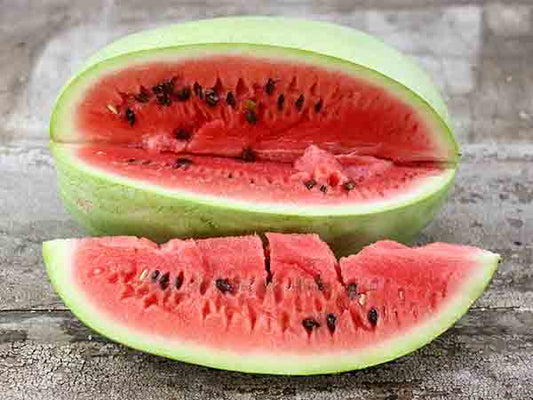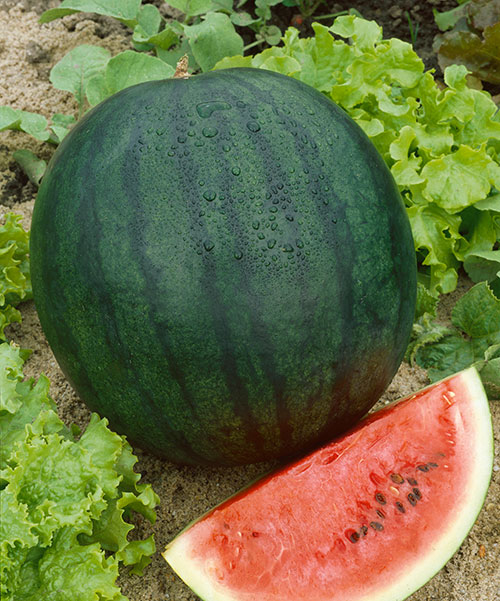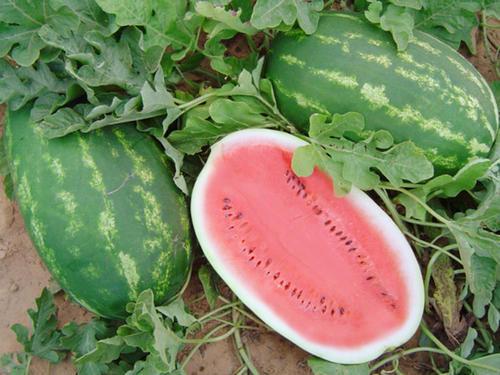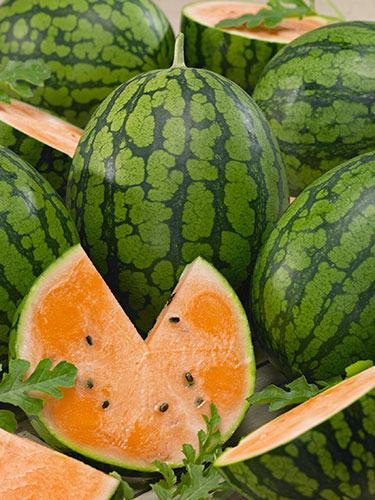-
Sugar Baby Watermelon
Regular price From $3.15 USDRegular priceUnit price per -
Crimson Sweet Watermelon
Regular price From $3.22 USDRegular priceUnit price per -
Moon and Stars Watermelon
Regular price From $3.49 USDRegular priceUnit price per -
Black Diamond Watermelon
Regular price From $3.04 USDRegular priceUnit price per -
Dixie Queen Watermelon
Regular price From $2.95 USDRegular priceUnit price per -
Kleckley's Sweet Watermelon
Regular price From $2.95 USDRegular priceUnit price per -
Congo Watermelon
Regular price From $2.95 USDRegular priceUnit price per -
Georgia Rattlesnake Watermelon
Regular price From $2.95 USDRegular priceUnit price per -
Early Crimson Treat Watermelon
Regular price From $2.95 USDRegular priceUnit price per -
Cal Sweet Bush Watermelon
Regular price From $3.45 USDRegular priceUnit price per -
Charleston Gray No. 133 Watermelon
Regular price From $2.95 USDRegular priceUnit price per -
Florida Giant Watermelon
Regular price From $2.95 USDRegular priceUnit price per -
 Sold out
Sold outMabry's Yellow Watermelon
Regular price $2.95 USDRegular priceUnit price per -
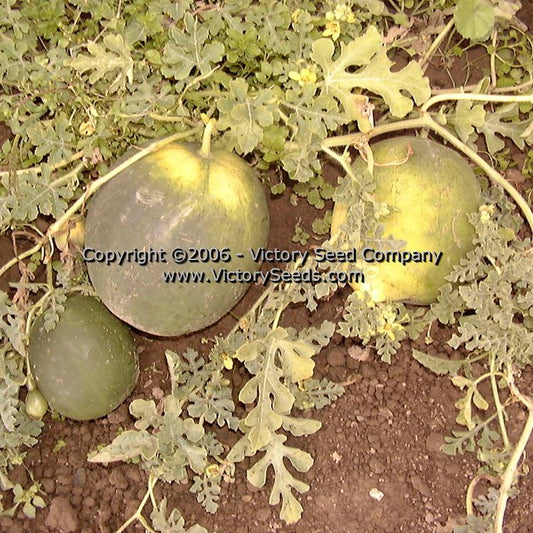 Sold out
Sold outArikara Watermelon
Regular price $3.95 USDRegular priceUnit price per -
Tom Watson Watermelon
Regular price $2.95 USDRegular priceUnit price per -
Allsweet Watermelon
Regular price From $2.95 USDRegular priceUnit price per -
Orange Tendersweet Watermelon
Regular price From $3.95 USDRegular priceUnit price per -
Blacktail Mountain Watermelon
Regular price $3.95 USDRegular priceUnit price per -
Sugar Baby Watermelon (Organic)
Regular price $3.93 USDRegular priceUnit price per -
Bozeman Watermelon
Regular price $4.19 USDRegular priceUnit price per -
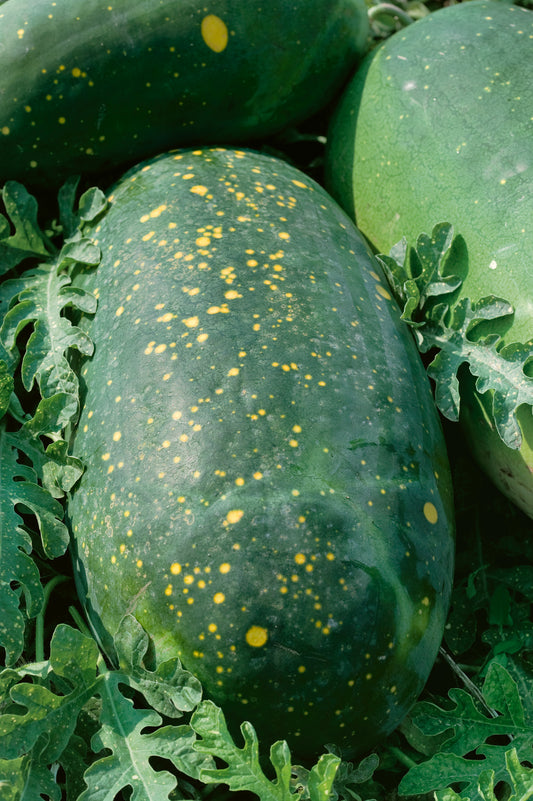
 Sold out
Sold outHarvest Moon F1 Watermelon
Regular price $7.95 USDRegular priceUnit price per
Watermelon Culture
Watermelons are a warm-season crop that thrive in air temperatures between 70 and 85ºF. Plant seeds direct in the garden in the spring after the last chance of frost for your area. Seeds will not germinate in cold soil so wait until soil temperatures at a four inch depth have reached about 65ºF. To get a jump on harvests, seeds can be started indoors and carefully transplanted.
Watermelons require full sun and a lot of room. Plants should be five to six feet apart in rows that are spaced six to eight feet from each other. Watermelon varieties will readily cross with each other as well as Citron so if you are intent on saving seed, grow only one variety and make sure your neighbors are growing the same. Isolation distance required is about one half mile. Hand-pollination is usually the preferred method for maintaining pure strains.
Watermelons will benefit from rich, healthy, well-drained soils. Work in plenty of well composted organic matter in early spring in preparation of planting a melon patch. Since watermelons are ninety two percent water, they require a lot of it. If you are using overhead sprinklers, water in the early morning so that the plants have a chance to dry before evening. This will help reduce opportunities for diseases to become established. Hand watering or drip irrigation is preferred. Water so that the soil is moistened to a depth of at least six inches; especially during fruit set and development.
Knowing when to harvest is a little tricky. When you have a field of watermelons, the best method it to sacrifice a fruit and taste the heart. If you have a home garden, this "brute force" method is not an option. First, compare your fruit with the description and days to maturity for the variety. Are the fruits the approximate size? Second, have enough days passed? Finally, look at the tendril closest to the fruit. If it has turned brown, the watermelon is usually ready to eat.
Watermelons are a warm-season crop that thrive in air temperatures between 70 and 85ºF. Plant seeds direct in the garden in the spring after the last chance of frost for your area. Seeds will not germinate in cold soil so wait until soil temperatures at a four inch depth have reached about 65ºF. To get a jump on harvests, seeds can be started indoors and carefully transplanted.
Watermelons require full sun and a lot of room. Plants should be five to six feet apart in rows that are spaced six to eight feet from each other. Watermelon varieties will readily cross with each other as well as Citron so if you are intent on saving seed, grow only one variety and make sure your neighbors are growing the same. Isolation distance required is about one half mile. Hand-pollination is usually the preferred method for maintaining pure strains.
Watermelons will benefit from rich, healthy, well-drained soils. Work in plenty of well composted organic matter in early spring in preparation of planting a melon patch. Since watermelons are ninety two percent water, they require a lot of it. If you are using overhead sprinklers, water in the early morning so that the plants have a chance to dry before evening. This will help reduce opportunities for diseases to become established. Hand watering or drip irrigation is preferred. Water so that the soil is moistened to a depth of at least six inches; especially during fruit set and development.
Knowing when to harvest is a little tricky. When you have a field of watermelons, the best method it to sacrifice a fruit and taste the heart. If you have a home garden, this "brute force" method is not an option. First, compare your fruit with the description and days to maturity for the variety. Are the fruits the approximate size? Second, have enough days passed? Finally, look at the tendril closest to the fruit. If it has turned brown, the watermelon is usually ready to eat.
Please refer to the Watermelon Fruit Blotch Information page prior to ordering.

